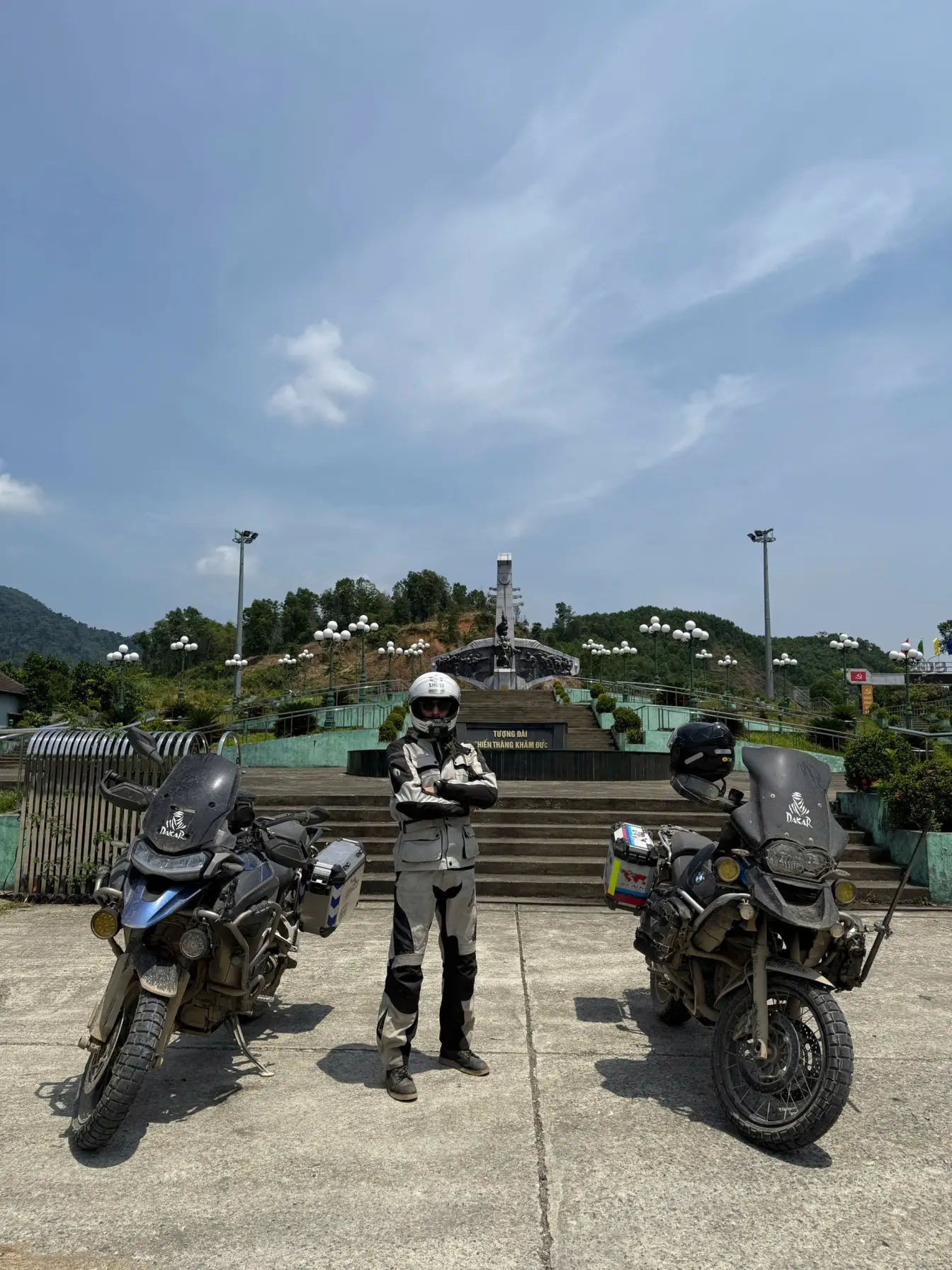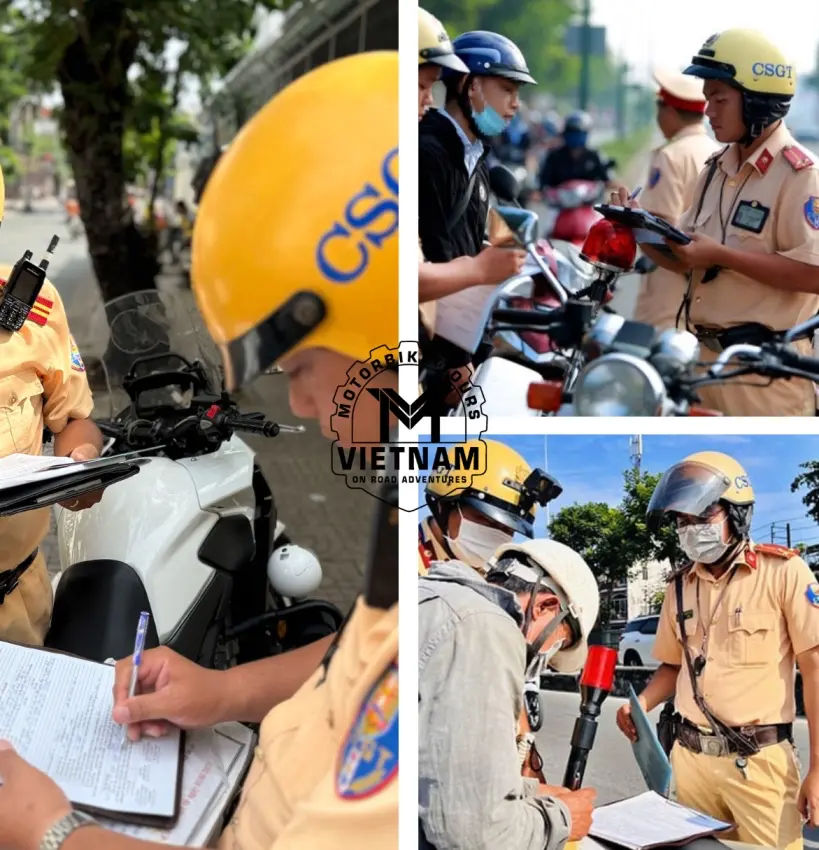
Speed Limits & Traffic Rules to aware of in Vietnam: Keep in mind that motorcycles should not exceed 40 km/h in the streets and 60 km/h on highways and rural roads, and understanding these limits is crucial because driving here can feel like organized chaos especially when navigating Hanoi’s busy streets or the fast-paced roads in the south. Vietnam’s national traffic laws set general limits of 30–50 km/h in cities, 70–90 km/h in rural areas, and up to 120 km/h for cars on expressways, but the real challenge comes from unpredictable traffic flow and constantly changing signage. With mandatory helmets, a strict 0.00% alcohol rule, and plenty of unexpected lane changes. This guide breaks down the key limits and rules you need to stay safe wherever you’re traveling in the country.
- Check out Vietnam motorbike tours
Overview of Traffic Regulations in Vietnam
Understanding Vietnam’s traffic regulations can feel overwhelming at first, especially when you’re watching hundreds of scooters weaving around each other like it’s second nature. But once you spend a bit of time on the road, things start to make more sense.
Vietnam actually has very clear national rules: wear your helmet, follow the signs, and don’t drink and drive ever. The country uses a strict 0.00% alcohol limit, and it’s taken seriously.
What surprised me most was how important road signs are (even still seeing some people do not care much about them). Speed limits can shift quickly from one block to the next, so it’s not enough to rely on what “should” be correct you need to watch the signs constantly.
Traffic lights, lane markings, pedestrian crossings they all follow the rules you’d expect, but drivers often treat them more like guidelines. Learning to stay alert, give others space, and assume someone might cut across your lane at any moment helped me adjust. Once you understand the flow, Vietnamese traffic becomes less chaotic and more like its own rhythm.
| Category | Speed Limits |
|---|---|
| Urban areas |
|
| Rural areas |
|
| Expressways |
|
Differences Between Northern and Southern Vietnam in Driving Rules
No differences, one country and one traffic rules apply for everyone. Even though Vietnam has national driving laws, the actual driving experience changes a lot between the north and the south.
When I first rode in Hanoi, the traffic felt dense and unpredictable, motorbikes slipping through every possible gap and intersections that seemed to run on instinct as much as red lights.
Northern drivers tend to be a bit more abrupt; people brake suddenly, merge without warning, and squeeze into tiny spaces. It keeps you on your toes.
When I got to Ho Chi Minh City, the roads felt wider and slightly more forgiving, though still busy. Southern drivers seem more fluid and faster, and the road network is better organized, especially around major highways.
Weather also affects driving: the north’s mist and winter chill slow everything down, while the south’s sudden rainstorms can turn roads slippery in seconds. None of this changes the laws themselves, but it definitely changes how you experience the road. If you’re traveling across regions, it takes a day or two to adjust to the “local style” of riding.
Speed Limits for Different Types of Roads
The speed limits are pretty straightforward on paper, but once you’re actually on the streets, you realize just how much they can shift depending on the area, the signage, and the condition of the road.
Officially, motorbikes usually stick to 40 km/h in cities and up to 60 km/h on rural highways, while cars can push faster especially on expressways. But it’s the signs that matter most.
I’ve seen a limit drop from 50 to 30 km/h within the span of a single block, and police often monitor these sections. On expressways, everything feels more controlled and predictable, while village roads can slow you to walking speed at times. What I learned early on is not to rely on “general rules” Vietnam treats speed limits dynamically depending on the road, the surroundings, and nearby schools or markets. Paying attention makes all the difference, and honestly, driving a bit slower helps you enjoy the scenery more too.
Urban Road Speed Limits
Urban roads in Vietnam are usually the slowest, and for good reason. There’s always someone turning, crossing, parking, or stepping out of a shop without warning.
The general speed limit for cities is around 30–50 km/h, and even that can feel fast in the middle of Hanoi’s Old Quarter or Saigon’s District 1. Most motorcyclists naturally slow down anyway because the traffic is so tight. When I first started riding in Vietnamese cities, I felt like I needed eyes on the back of my helmet.
Cars pull into traffic suddenly, buses cut across lanes, and motorbikes appear from every angle. But once you get used to it, you realize everyone is watching out for everyone else, and speeds remain low enough to avoid major collisions. This lower speed is what makes the system chaotic as it seems actually work.
Just remember that signs change often, and school zones are especially strict. If you follow the limits and ride at a calm pace, city driving becomes less stressful and more like navigating a moving community.
Highway and Expressway Speed Limits
Highways and expressways in Vietnam feel completely different from the inner-city streets. Cars are allowed much higher speeds here sometimes up to 120 km/h on the newer expressways.
Motorbikes, however, are usually banned from expressways entirely, which took me by surprise the first time I tried to enter one. On normal highways where motorbikes are allowed, the typical limit hovers around 60 km/h, and drivers tend to stick to it because traffic police frequently monitor these routes.
The feeling on highways is more relaxed: wide lanes, clearer signage, and fewer sudden surprises. But every now and then, you’ll find slow-moving trucks, overloaded motorbikes, or animals crossing the road, so keeping your speed steady and predictable helps a lot. I’ve found highway driving to be one of the smoother parts of traveling long distances in Vietnam, especially when moving between major cities like Saigon and Can Tho or Hanoi and Ninh Binh.
Rural and Mountain Road Speed Limits
Rural and mountain roads come with their own set of unwritten rules, even though the official limits are usually around 60–70 km/h for cars and about 40–50 km/h for motorbikes.
In reality, you often end up going slower or faster. These roads wind through small villages, past rice fields, and into the mountains, where sharp bends and sudden dips can appear out of nowhere.
Some stretches are beautifully paved, while others are full of potholes or narrow enough for only one vehicle at a time. When I traveled through Ha Giang, I rarely hit the posted speed limit because the scenery, the steep drops, and the unpredictable traffic like buffalo wandering across the road forced me to slow down. Rural areas also switch speed limits abruptly near markets, schools, or village entrances, and the signs can be easy to miss if you’re not paying attention. Taking it slow makes the ride safer and lets you enjoy some of the most stunning landscapes in Vietnam.
Traffic Signs and Road Markings
Learning traffic signs and road markings is one of those things you don’t fully appreciate until you find yourself in the middle of a busy intersection wondering why everyone suddenly slowed down.
The signs follow international styles, but the placement can feel a bit random, especially when you’re riding through older neighborhoods or rural towns where the poles lean a little and signs are partly hidden behind trees. Still, once you get used to them, they become surprisingly reliable.
Road markings especially lane dividers are often faded, but they still guide the flow of traffic, even if drivers treat them more like suggestions than strict rules. I’ve found that paying extra attention to signs is essential in Vietnam because speed limits change often, and sometimes without warning. It’s not uncommon for the limit to drop right before a school or market, and you’ll only notice if you’re really scanning the roadside. Once you get into the habit, these signs start to make a lot more sense.
Common Warning Signs
Warning signs are everywhere once you learn what to look for. They’re usually yellow or orange with black icons, and they alert you to everything from sharp turns to slippery roads.
The first time I rode in the mountains of Ha Giang, the warning signs became my best friends they showed exactly when a steep drop or tight curve was coming, which made the ride a lot safer. In cities, warning signs tend to mark pedestrian crossings, school zones, and construction areas, and these spots can get chaotic fast.
Sometimes the signs appear a bit late, so you learn to rely on the road’s “body language” too like when traffic slows suddenly or riders start shifting lanes before you can see why. Vietnam’s warning signs might not always be perfect, but they give you enough information to stay prepared, especially if you stay alert and adjust your speed early.
Prohibition and Mandatory Signs
Prohibition and mandatory signs are some of the most important ones to understand because they tell you exactly what you can’t do and in Vietnam, ignoring them can lead to heavy fines.
These signs usually come in red or blue circles. You’ll see no-entry signs, no-parking symbols, and speed limit circles more frequently than you’d expect, especially in busy downtown areas. Motorbikes often have their own restrictions, like “no motorbikes allowed” zones, which usually apply to expressways.
The first time I mistakenly followed a group of riders toward an expressway ramp, a guard stopped me before I got myself into trouble. Mandatory signs, like those telling you which direction you must turn, are also common and help keep traffic flowing. Even if locals sometimes bend the rules a bit, following these signs makes your ride much smoother and avoids unnecessary stress.
Rules for Motorbikes and Cars
Motorbikes and cars follow the same national laws in Vietnam, but the way the rules apply on the road feels very different. Motorcycles dominate the traffic here, so their behavior shapes the flow of everything else.
Cars have more restrictions in narrow urban areas, and many streets aren’t built with wide lanes, which makes driving a car in cities feel tight and slow. Motorbikes, meanwhile, can join almost any street and weave through spaces cars can’t.
What surprised me most when I first arrived was how motorbike-heavy intersections shape the rhythm of traffic cars wait longer, move slower, and often follow the motorbike flow rather than lead it. Outside the cities, though, the roles flip. Highways and open rural roads give cars more freedom and space, while motorbikes stick to slower lanes on the side. Learning how each type of vehicle “behaves” helps you predict what others will do, making the ride much more comfortable.
Motorbike Regulations in Cities
Riding a motorbike in Vietnamese cities comes with a unique set of rules some written and some learned through experience. The basics are simple: helmets are mandatory, turn on your headlights in the evening, and stick to the right side of the road. But city riding adds its own layers.
For example, certain streets ban motorbikes during peak hours, especially around major walking streets or holidays.
Speed limits are low, usually around 30–40 km/h, but most riders naturally go slower because traffic is so tight. One thing I had to get used to was the constant movement people turning without signaling, crossing traffic slowly, or riding side-by-side chatting with friends.
It’s normal here, and once you adjust, it stops feeling stressful. The key is to stay patient, keep your eyes scanning ahead, and expect the unexpected. When you flow with the traffic instead of fighting it, city riding becomes surprisingly enjoyable.
Car Driving Rules in Urban and Rural Areas
Driving a car in Vietnam feels completely different depending on where you are. In cities, cars are at a disadvantage. Narrow streets, heavy motorbike traffic, and constant lane merging make urban driving slow and sometimes frustrating. You have to be gentle and patient, and you’ll often find yourself inching forward behind a wall of scooters.
Parking rules are strict too, and finding legal parking can be a challenge unless you’re near a mall or a designated lot.
Out on rural roads, though, things open up. The speed limits jump, visibility improves, and the driving experience becomes much more relaxed. Cars have more space and can travel faster, especially on highways.
However, you still need to watch for sudden surprises—like livestock, slow-moving trucks, or people crossing the road without warning. I’ve found that rural driving feels more predictable overall, but it demands just as much attention.
Penalties for Traffic Violations
Vietnam doesn’t take traffic violations lightly, and the penalties can be surprisingly high, especially for foreigners who may not expect it. The country uses strict fines for speeding, illegal turns, riding without a helmet, or using the wrong lane.
What catches most travelers off guard is the alcohol rule: Vietnam enforces a 0.00% blood alcohol limit for all drivers, and checkpoints are common during holidays or weekend evenings.
I’ve seen police stop riders for something as small as missing a sign that lowered the speed limit by 10 km/h. Cameras appear more often, especially in big cities, so even if a police officer doesn’t stop you immediately, you might still pay a fine later. Authorities don’t enforce rules to scare drivers—they want to keep roads safe in a country where traffic is already busy. Once you learn the rules and follow them, avoiding penalties becomes easy.
Following is the fine if riding a motorbike in Vietnam without a valid driving license:
| Violation | Fine (USD1=26000 VND) | Legal Reference |
|---|---|---|
| Not carrying a driver’s license | 200,000 – 300,000 VND | Point d, Clause 2, Article 18, Decree 168/2024/ND-CP |
| No driver’s license | – Up to 125cc or electric ≤ 11 kW: 2,000,000 – 4,000,000 VND – Over 125cc or electric > 11 kW, three-wheel motorcycles: 6,000,000 – 8,000,000 VND – High CC motorcycles: 4,000,000 – 6,000,000 VND |
Point a, Clause 5 and Point b, Clause 7, Article 18, Decree 168/2024/ND-CP |
Safety Tips for Driving in Vietnam
Driving safely in Vietnam is less about memorizing every rule and more about learning the rhythm of the road. The first tip I always give friends is to ride or drive defensively assume someone might cut in front of you, stop suddenly, or cross the road without looking. The second is to slow down.
Even if the limit says 50 km/h, going a little slower gives you more time to react. I also learned to rely on mirrors constantly because motorbikes appear out of nowhere. In rural areas, watch out for animals and unexpected potholes; in cities, expect sudden stops and lane changes.
Weather matters too rain can turn roads extremely slippery. And above all, don’t drink and drive. Vietnam’s zero-alcohol policy is strict, and the roads are unpredictable enough without the extra risk.
Conclusion on Driving Culture in Northern and Southern Vietnam
Driving culture in Vietnam is the same in law but feels different between regions. In the north, traffic especially in Hanoi is tight, fast-moving, and unpredictable, while in the south, roads are wider and drivers generally move more smoothly.
Despite these differences, there’s a shared understanding on the road: when to yield, merge, and navigate around others. Once you learn to read traffic, follow signs, and stay patient, driving anywhere in Vietnam becomes manageable and even a unique part of the local experience.
About the author
Hamid is a rider and road enthusiast who has explored both northern and southern Vietnam extensively. With firsthand experience navigating city streets, rural roads, and expressways, he shares practical tips and insights to help fellow travelers understand traffic rules, local driving habits, and stay safe on Vietnamese roads.










